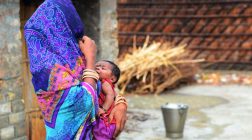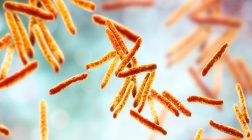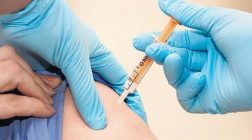27,190 brands, Generics 84%, pure generics 8%, OTC another 8%. 65% of Indians with no acess to medicines & 87% with no hygienic toilets, yet India sells Pepsi/Cola in 74% Rural India. Satya Brahma
New Delhi : 5th December 2010. 30,000 Pharma players, 27,190 brands, Generics 84%, pure generics 8%, OTC another 8%. 65% of Indians with no acess to medicines & 87% with no hygienic toilets, yet India sells Pepsi/Cola in 74% Rural India, this is the story of Indian Healthcare Industry. Either buy a company or sell the company but never venture into consolidation for a start-up firm, this seems to be the mantras of this decade & the leading Pharmaleaders who hit headlines seemed to believe that an era of consolidation of brands are over & an era of new experimentation with different domains/industries kickstarts. As we step into 2009, we will have a mix of opportunities and challenges. The emerging markets will be our prime growth engines. We will focus on delivering high-value new products across geographies. There will also be additional emphasis on cost-optimisation and enhancing productivity. Pharmaleaders see both excitement and concern that the domestic pharma landscape is seeing a “seismic shift”. Some years ago, the list of top drug-makers in India, saw only 20 per cent representation from multinational companies. Call it creation of value for shareholders or selling matured pharmaceutical businesses, but the fact of the matter remains that India is certainly losing hold over its traditional Pharma industry, just as old players of the game with substantial size are calling quits and monetizing their decades old generics model. Interestingly, the dearness of valuations can be gauged from the fact that the Piramal’s generics business has attracted a whooping valuation of $3.72 billion as against $4.2 billion Daichi Sankyo’s take over of India’s Ranbaxy Laboratories in 2008.
Braving scepticism from friends and putting emotions on the backburner, Malvinder Mohan Singh chose to exit Ranbaxy Laboratories as a promoter in the largest sell-out in India Inc’s history. In 2006, 33-year-old Malvinder took over the company founded by Singh’s grandfather Bhai Mohan Singh in 1961. The man took the industry by surprise when he sold his family’s crown jewel to Japanese drug company Daiichi Sankyo for about Rs 10,000 crore. Many felt that it was a historic blunder in corporate history but when Ajay Piramal sold Nicholas Piramal’s domestic business for $3.72 billion (a whopping Rs. 17000 crore), Malvinder silenced his critics that india is slowly gearing for a new business order that business does not go by emotions, it goes by passions. In future, we will see many more deals which are in the offerings.
In the Daiichi-Ranbaxy deal, the Japanese company benefited from Ranbaxy’s low-cost manufacturing infrastructure and its strong supply chain, even as Ranbaxy gained access to Daiichi Sankyo’s R&D expertise to advance its branded drugs business. With the sale of its generics division, Piramal Healthcare is left with businesses of contract manufacturing, global critical care, OTC products, Lab diagnostic business, Pathology and radio labs and vitamin and equipment business. The Indian Pharma industry has clocked a growth of about 12% over last decade. Going at this pace, it may take more than 2 decades for the MNC Pharma companies to recover their investment costs involved in buying out the generics businesses of Indian companies of size of Ranbaxy and Piramal Healthcare. This may gradually lead to hike in prices of key generic drugs as the lobbies of MNC grab more say in the domestic drugs market. Earlier, drug makers such as Ranbaxy, Cipla and Dr Reddys used to almost equally dominate the share in the domestic drugs markets. Now, the new developments have popped up with new equations altogether. Ranbaxy continues to hold its market share, but only as a Daiichi subsidiary after being acquired by the Japanese company. Another big change with the agreement to acquire generics business of Piramal Healthcare is that, US drug maker Abbott Laboratories gains a numero uno position in the domestic market share to the tune of around 7%, this being out of no where until now. This only leaves domestic major Cipla, from the traditional list of Indian drug makers, with a substantial market share in India. Moreover, five of the top ten drug makers in the country are MNCs.











